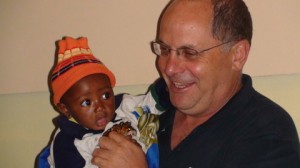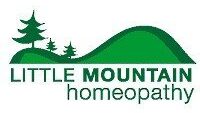Homeopaths all over the world are having much success with treating HIV/AIDS, especially in Africa. It is important to note that homeopathy should be used along with, and not instead of, antiretroviral drugs (ARVs).
Homeopathy for Health in Africa

World-renowned homeopath Jeremy Sherr has treated thousands of HIV/AIDS successfully at his clinic in Tanzania, Africa. “Patients report an increase in energy and well-being and an improvement in the debilitating side effects of anti-retroviral treatment. This means that they can continue taking the ARV drugs for a longer time before the medications lose their effectiveness. They can return to work, feed and take care of their children and send them to school.” For more information about this project, visit Homeopathy For Health in Africa Website http://www.homeopathyforhealthinafrica.org/
ARHF: Aids in Africa
Initially ARVs, Anti-Retroviral drugs, were too expensive for Africa so only a minority of infected people were able to obtain them. Millions of diseased people did not receive any treatment at all. Death was their certain fate.
In recent years the price, of ARVs has come down and as a rule, institutions and governments now provide ARVs for free. However, the majority of patients still receive no treatment (2015). With an assumed death rate of 1.1 million per year and 1.5 million new infections per year, the AIDS epidemic is still taking and affecting many lives in Africa.
Despite the increasing use of ARVs, many millions more AIDS deaths are predicted in sub-Saharan Africa in the years to come. Therapy resistance is an increasing problem. Many HIV-positive-born children are no longer responding to the ARVs they have taken since birth and are still to face an early death.
In 2001, Peter Chappell, an English homeopathic practitioner, followed a heartfelt desire to go to Africa to see what homeopathy could do for the millions of AIDS patients who received no treatment. After taking some 70 cases of AIDS-patients in Ethiopia, he collected all their AIDS-related symptoms and tried to find a homeopathic remedy that would match the disease. To his great disappointment such a remedy appeared not to be known in homeopathy. Peter then investigated the possibilities of making such a remedy himself.
In 2002, he found a way and created a remedy for HIV/AIDS that he later called PC1. To his great joy he found that all patients who took the remedy responded very well to it. Their energy levels and appetites quickly returned to normal and their pains and lung problems subsided. They could soon return to their jobs, take care of their children, in other words resume a normal, active life.
Since 2002, PC1 has been used in several African countries by visiting homeopathic doctors who work as volunteers in health clinics and also by many African doctors, nurses and community health workers that have been trained by ARHF.
Their reported results are very similar to those initially reported by Peter Chappell.
In several studies, the clinical observations were confirmed, namely that AIDS-patients taking PC1 recover from their AIDS-related symptoms rapidly and that the significant decrease of opportunistic infections indicates a restoration of their immune system, which is confirmed by rising CD4 counts.
Studies and Research on the Homeopathic Treatment of HIV/AIDS
Targeted therapy for HIV treatment is the antiretroviral therapy but varied types of drug toxicities and adverse reactions are quiet common. Homoeopathy is popularly known for its unique methods to tackle the infection especially in viral diseases. The study was an open clinical trial using individualized homoeopathic medicines selected through repertorization. The aim of study was to observe the changes in CD4 and Viral load volumes after intervention of individualized homoeopathic medicines. 90 seropositive patients were enrolled in two study centers of Central Council for Research in Homoeopathy (CCRH). 72 patients, who completed the follow up period of six months, were assessed. There was significant change in Viral load volume as compared to the baseline data (95% CI, 0.16, 1.24, p=0.012), but no significant changes was observed in CD4 cells (95% CI, -9.31, 57.84, p=0.154).The other parameters like Body Mass Index (BMI) (95%,-1.12,-.57, p<0.001) showed significant improvement. After homoeopathic intervention, WHO-QOL (Quality of Life) parameters showed statistical significant changes at p<0.05 in physical health, psychological and envirnomental domains but in social domain no significant change was noted.
The diagnoses of all patients in this study were initially confirmed by the two accepted laboratory analyses, ELIZA and the Western Blot, which were performed by a World Health Organization-recognized center in India. After homeopathic treatment, 12 patients who initially tested HIV+ from the ELIZA test were found to be HIV- later. The initial report on this study showed that only 2 of these 12 patients were tested again through the Western Blot, which opened the study up to criticism because the ELIZA test is known to have errors and requires a confirmatory test with the Western Blot. Because of the extremely atypical result of this study, the editor of the homeopathic journal in which it was published was so startled that he wrote an editorial questioning its authenticity. (P. Fisher, “When to Believe the Unbelievable,” British Homoeopathic Journal, January, 1993, 82:2-3.) However, since this editorial, the authors have confirmed that 9 of the original 12 patients tested negative according to the Western Blot, and an additional two people changed from HIV+ to HIV-. (D.P. Rastogi, “Asymptomatic HIV Carriers,” British Homoeopathic Journal, January 1994, 83:54.)
OBJECTIVE: This study was aimed to evaluate the immuno-modulator role of homeopathic remedies in Human Immunodeficiency Virus (HIV) infection.
METHODOLOGY: A randomised double blind clinical trial was conducted to compare the effect of homeopathic remedies with placebo, on CD4+ve T-lymphocytes in HIV infected individuals, conforming to Centres for Disease Control (CDC) stage II & III. 100 HIV+ve individuals between 18-50 y (71% males) were included in the study. 50 cases conformed to CDC stage II–Asymptomatic HIV infection, and 50 cases to CDC stage III–Persistent Generalised Lymphadenopathy (PGL). Cases were stratified according to their clinical status and CD4+ve lymphocyte counts. The randomisation charts were prepared much before the start of the trial by randomly assigning placebo and verum codes to registration numbers from 1 to 50. A single individualised homeopathic remedy was prescribed in each case and was followed up at intervals of 15 d to one month. A six months study was performed for each registered case. Assessment of progress was made by evaluation of CD+ve lymphocyte counts, which was the prospectively-defined main outcome measure of the study; the results were compared with the base line immune status.
RESULTS: In PGL, a statistically significant difference was observed in CD+ve T-lymphocyte counts between pre and post trial levels in verum group (P < 0.01). In the placebo group a similar comparison yielded non-significant results. (P = 0.91). Analysis of change in the pre and post trial counts of CD4+ve cells between groups was also statistically significant (P = 0.04). In asymptomatic HIV infection, differences in absolute CD4+ve lymphocyte counts between pre and post trial levels were not significant. Analysis of changes in pre and post trial CD4 levels of placebo and verum groups for combined strata of asymptomatic and PGL groups was also not significant.
CONCLUSION: The study suggests a possible role of homeopathic treatment in HIV infection in symptomatic phase, as evidenced by a statistically significant elevation of base line immune status in persistent generalised lymphadenopathy.
Introduction: Identifying the need for strengthening of the immune system, the investigator has developed new Human Immunodeficiency Virus (HIV) nosode and evaluated its effect on HIV positive individuals through a clinical trial.
Methods: Standardized and the scientific method of HIV nosode preparation has been described and documented. Thirty-seven HIV-infected persons were registered for the trial, and ten participants were dropped out from the study, so the effect of HIV nosode 30C and 50C, was concluded on 27 participants under the trial.
Results: Out of 27 participants, 7 (25.93%) showed a sustained reduction in the viral load from 12 to 24 weeks. Similarly 9 participants (33.33%) showed an increase in the CD4+ count by 20% altogether in 12 th and 24 th week. Significant weight gain was observed at week 12 (P = 0.0206). 63% and 55% showed an overall increase in either appetite or weight. The viral load increased from baseline to 24 week through 12 week in which the increase was not statistically significant (P > 0.05). 52% (14 of 27) participants have shown either stability or improvement in CD4% at the end of 24 weeks, of which 37% participants have shown improvement (1.54-48.35%) in CD4+ count and 15% had stable CD4+ percentage count until week 24 week. 16 out of 27 participants had a decrease (1.8-46.43%) in CD8 count. None of the adverse events led to discontinuation of study.
Conclusion: The study results revealed improvement in immunological parameters, treatment satisfaction, reported by an increase in weight, relief in symptoms, and an improvement in health status, which opens up possibilities for future studies.
Case Examples of the Successful Homeopathic Treatment of HIV/AIDS:
Three cases of HIV/AIDS: Felician, Esther, and Mary by Jeremy Sherr
A Day in the Clinic by Camilla Sherr
Case Examples Homeopathy for Health in Africa
